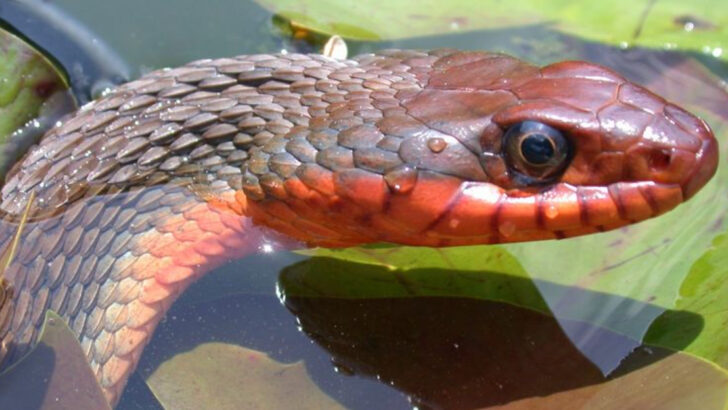They slither, stalk, and sunbathe like they own the place—because in North Carolina’s swamps, they do.
These reptiles aren’t background players. They’re the main event. From thick-bodied water snakes to armored alligators, they rule the wetlands with cold-blooded confidence.
Some creep silently beneath the surface, waiting for the perfect moment to strike. Others bask in plain sight, daring you to look twice.
Whether you’re knee-deep in cypress roots or watching from a safe boardwalk, one thing’s for sure—these swamp dwellers aren’t just surviving.
They’re thriving.
American Alligator
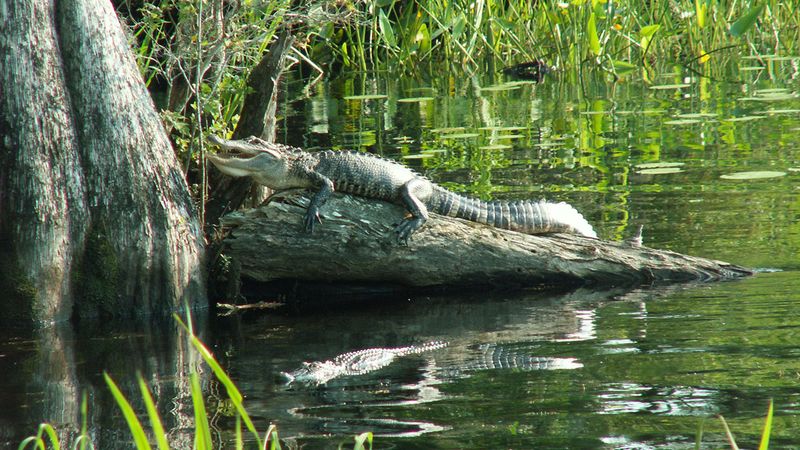
The American Alligator is an iconic sight in the swamps of North Carolina. With its rugged appearance and powerful jaws, it commands attention. Despite their fearsome look, they’re mostly shy around humans. These reptiles prefer to lurk in the murky waters, their eyes and nostrils just above the surface, waiting for prey.
In the warm sun, they bask on the banks, regulating their body temperature. Their presence is critical for maintaining the ecological balance as they control fish and amphibian populations.
Did you know? Alligators can live up to 50 years in the wild.
Eastern Box Turtle
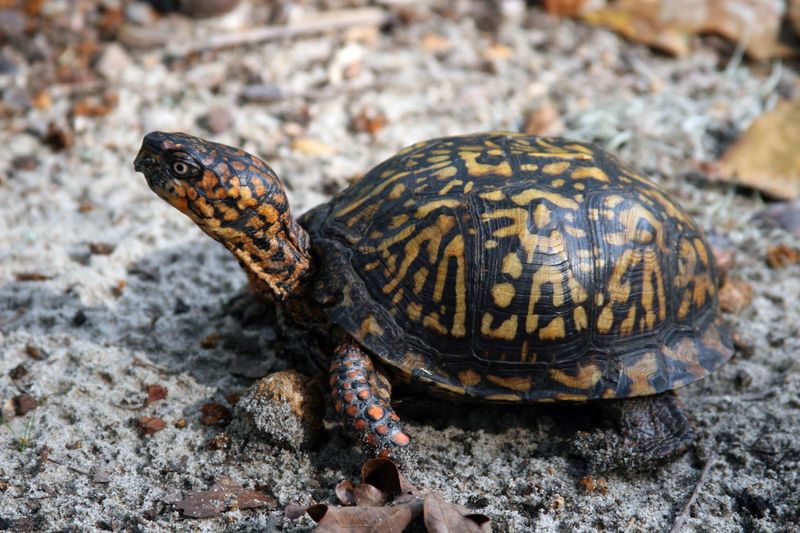
Meet the Eastern Box Turtle, a symbol of longevity and endurance. Known for their vividly patterned, high-domed shells, these turtles traverse the swampy terrain with grace. They have a unique hinged plastron that allows them to retract completely into their shells for protection.
Eastern Box Turtles are omnivorous, enjoying a varied diet of insects, fruits, and fungi. Their slow pace is compensated by their keen sense of smell and vision.
Fun fact: These turtles can live for over 100 years, making them one of the longest-living reptiles.
Carolina Anole
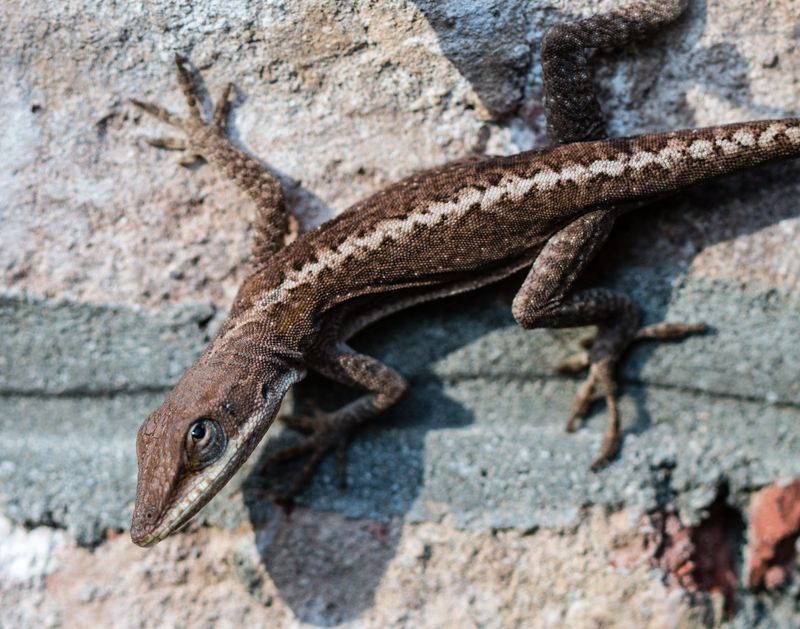
The Carolina Anole, often called the American chameleon, adds a splash of color to the North Carolina swamps. This small, agile lizard is known for its remarkable ability to change colors, ranging from bright green to brown, aiding in camouflage.
They are often seen basking in the sunlight or darting between the foliage in search of insects. The males are especially striking when they extend their pink dewlap during courtship or territorial displays.
These lizards are not only fascinating to observe but also play a crucial role in controlling insect populations.
Copperhead Snake
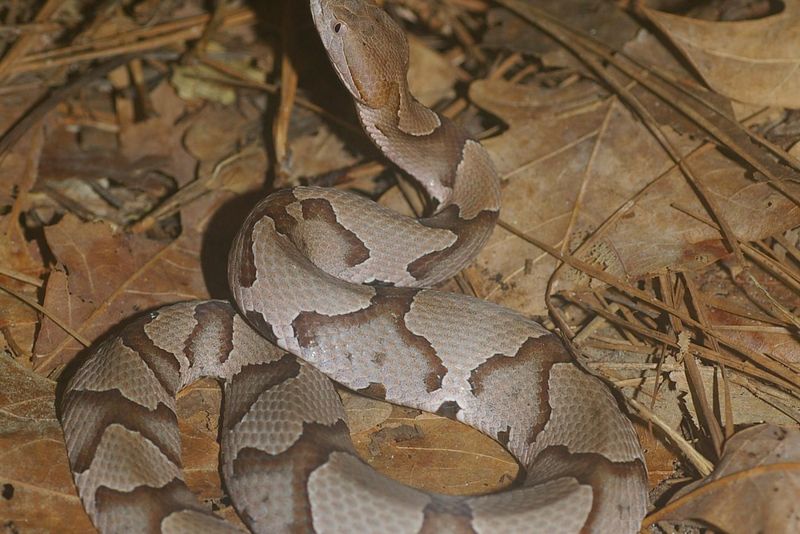
The Copperhead Snake is a master of disguise. With its copper-toned skin and hourglass patterning, it blends seamlessly into the leaf litter of North Carolina’s swamps. This venomous snake prefers to lie in wait, ambushing small mammals, birds, and amphibians.
Though they have a fearsome reputation, Copperheads are generally shy and avoid human contact. Their bite, while painful, is rarely fatal if treated promptly.
Interesting tidbit: Despite their venom, Copperheads play an essential role in the ecosystem by keeping rodent populations in check.
Eastern Diamondback Rattlesnake

The Eastern Diamondback Rattlesnake is both feared and admired. Its distinctive diamond pattern and formidable rattle warn of its presence. In the swamps of North Carolina, these snakes are apex predators, feeding on small mammals and birds.
Despite their dangerous reputation, rattlesnakes are keen to avoid conflict, preferring to retreat when faced with humans. Their rattling sound serves as a warning, allowing potential threats to back away.
Did you know? Rattlesnakes have heat-sensing pits that help them locate warm-blooded prey even in total darkness.
Yellow-bellied Slider
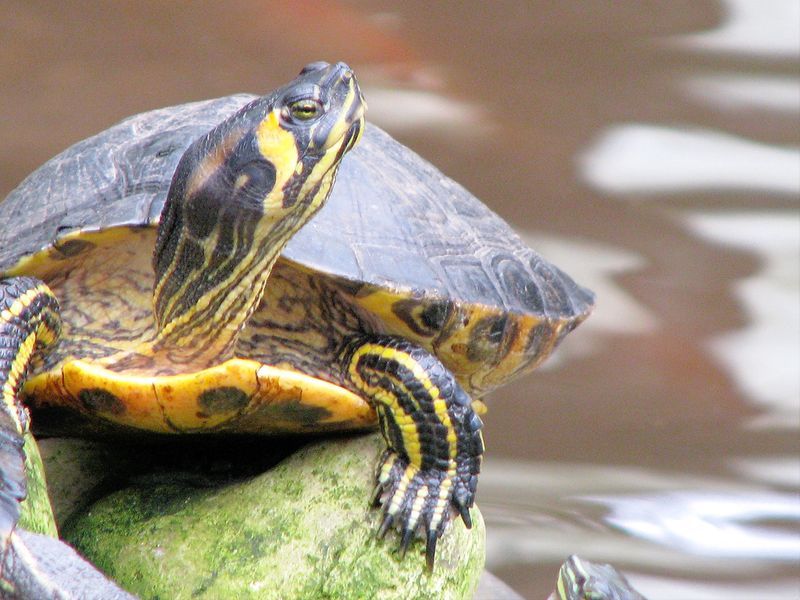
The Yellow-bellied Slider is a common sight in North Carolina’s swamps, easily recognizable by its yellow plastron and dark shell. These turtles are avid baskers, often seen soaking up the sun on logs or rocks.
They are omnivores, feeding on aquatic vegetation, insects, and small fish. Their adaptability allows them to thrive in varying aquatic environments.
Fun fact: Yellow-bellied Sliders can hold their breath underwater for over 30 minutes, making them adept at avoiding predators and catching prey.
Spotted Turtle
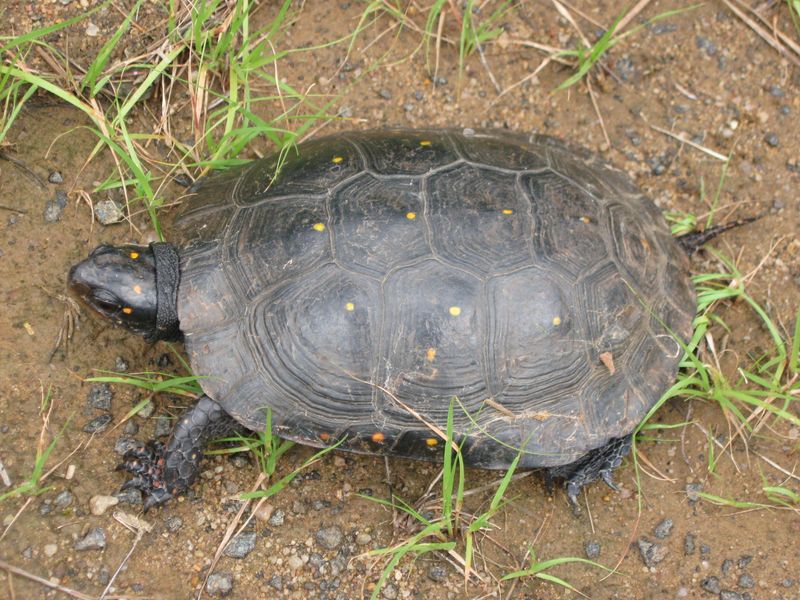
With its black shell dotted with bright yellow spots, the Spotted Turtle is a visual delight in North Carolina’s swamps. These small turtles prefer shallow, marshy waters and are active during the cooler parts of the day.
Their omnivorous diet includes insects, plants, and small aquatic animals. Spotted Turtles are known for their cautious nature, often retreating into the water at the slightest hint of danger.
Interesting note: These turtles are often used as indicators of healthy wetland ecosystems due to their sensitivity to environmental changes.
Florida Softshell Turtle

Florida Softshell Turtles are unique with their leathery shells and snorkel-like noses. These large turtles are found in the muddy waters of North Carolina’s swamps, where they hunt for fish, insects, and crustaceans.
Their long necks and swift swimming make them agile predators. Despite their size, they are often shy and prefer to bury themselves in mud when threatened.
Fun fact: Florida Softshell Turtles are capable of absorbing oxygen through their skin while submerged, allowing them to stay underwater for extended periods.
Broad-headed Skink

The Broad-headed Skink is a striking lizard found in North Carolina’s swampy forests. Males are especially notable during the breeding season when their heads turn a vivid orange.
These skinks are arboreal, spending much of their time in trees hunting for insects and small invertebrates. Their powerful jaws help them catch and consume prey effectively.
Did you know? Broad-headed Skinks can drop their tails to escape predators, a process known as autotomy. The tail continues to wriggle, distracting the predator while the skink escapes.
Eastern Mud Turtle
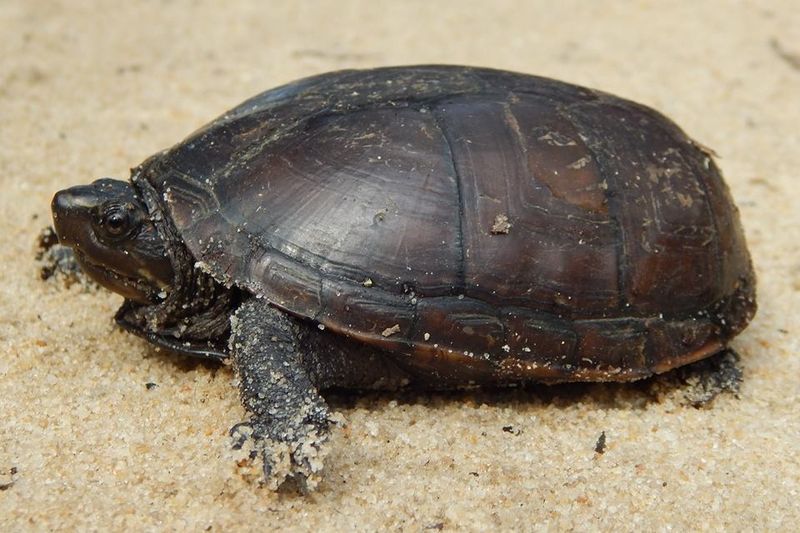
The Eastern Mud Turtle is a master of camouflage. With its small, domed shell, it’s often overlooked in the muddy waters it calls home. Found across North Carolina swamps, these turtles thrive in slow-moving water.
They are omnivorous, feeding on invertebrates, algae, and detritus. Their ability to bury themselves in mud allows them to escape predators and survive dry seasons.
Interesting tidbit: Eastern Mud Turtles can aestivate—enter a state of dormancy—during extreme weather, emerging when conditions improve.
Five-lined Skink

The Five-lined Skink is a delightful sight, with its bright blue tail and striking stripes. These agile lizards bask in the sun on rocks or logs, absorbing warmth to fuel their energetic pursuits.
Young skinks sport a more vivid blue tail, which fades as they mature. They are fast hunters, darting across the swamp floor to catch insects.
Fun fact: Their tail can detach and wriggle, distracting predators and giving the skink a chance to escape. This unique defense mechanism is both effective and fascinating.
Common Snapping Turtle
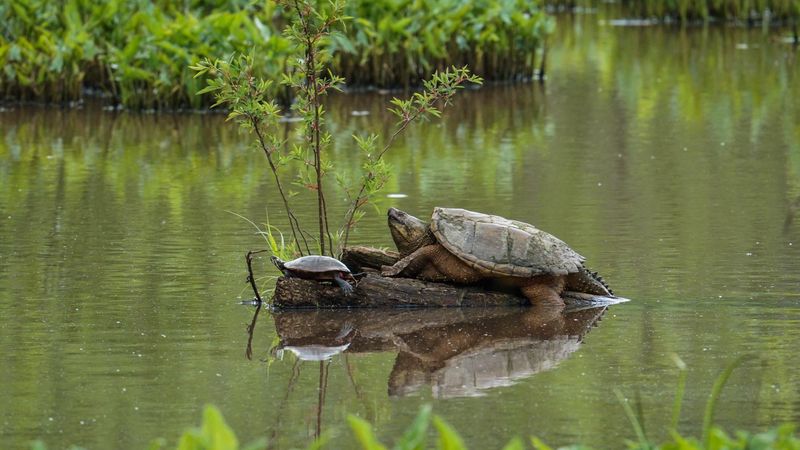
The Common Snapping Turtle is a formidable presence in North Carolina’s swamps. Known for their aggressive nature, these turtles have powerful jaws and a strong bite.
They prefer muddy waters and are often seen lurking just below the surface, waiting to ambush prey. Their diet includes fish, small mammals, and carrion.
Did you know? Despite their intimidating demeanor, Snapping Turtles play a crucial ecological role by keeping aquatic ecosystems clean through scavenging.
Eastern Ribbon Snake
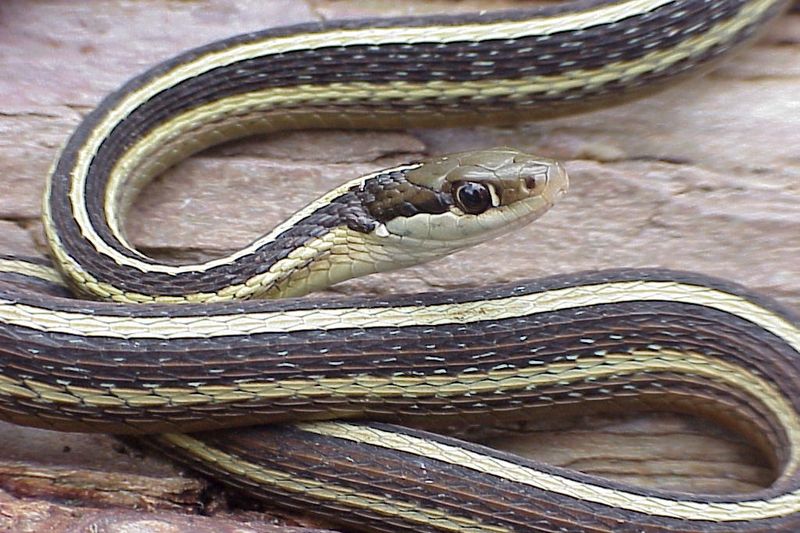
The Eastern Ribbon Snake is a slender, graceful resident of North Carolina’s swamps. Its long, thin body is adorned with vivid stripes, making it a striking sight as it moves through the vegetation.
These snakes are non-venomous and feed primarily on amphibians and small fish. Their agility and speed make them adept hunters in their watery habitat.
Fun fact: Ribbon Snakes are excellent swimmers, often seen gliding across the water’s surface in search of prey or escaping predators.
Red-bellied Water Snake
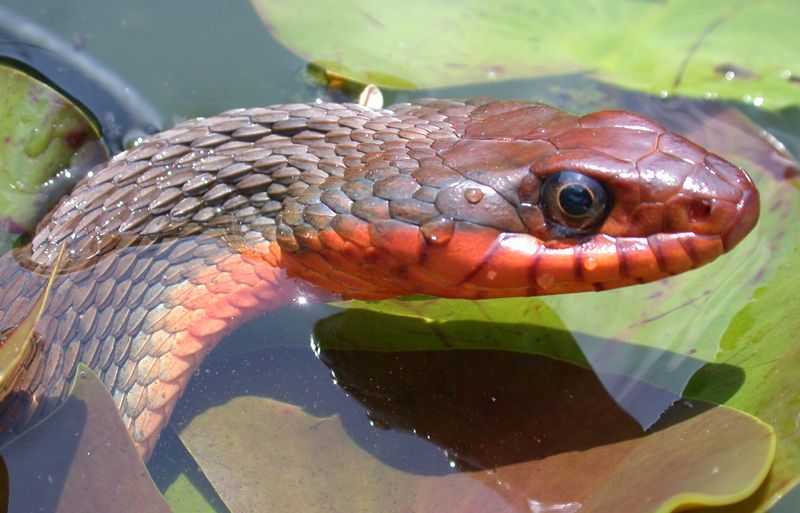
The Red-bellied Water Snake is a striking creature with a vivid red underside contrasting its darker upper body. Found in the swamps of North Carolina, these snakes are often seen basking on branches overhanging the water.
They are non-venomous and feed on fish and amphibians, playing a role in controlling aquatic populations. Their presence is a sign of healthy swamp ecosystems.
Interesting tidbit: Despite their fearsome appearance, Red-bellied Water Snakes are shy, preferring to flee rather than confront potential threats.
Musk Turtle
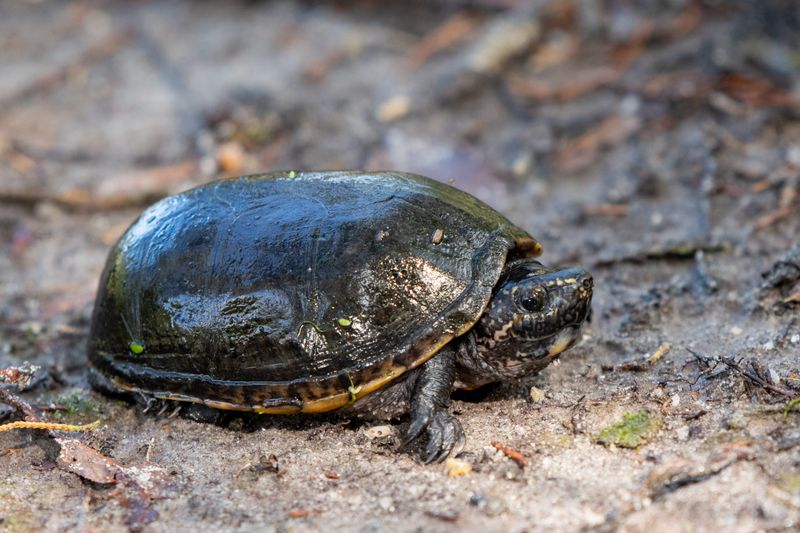
Musk Turtles, often called “stinkpots,” are small but noteworthy residents of North Carolina’s swamps. They get their nickname from the strong odor they emit when threatened.
These turtles have a keen sense of smell and are adept at finding food, which includes aquatic insects, snails, and plants. Their small size and secretive nature make them less visible but no less interesting.
Fun fact: Musk Turtles can climb surprisingly well, often seen scaling submerged branches in search of sunlight or food.
Corn Snake
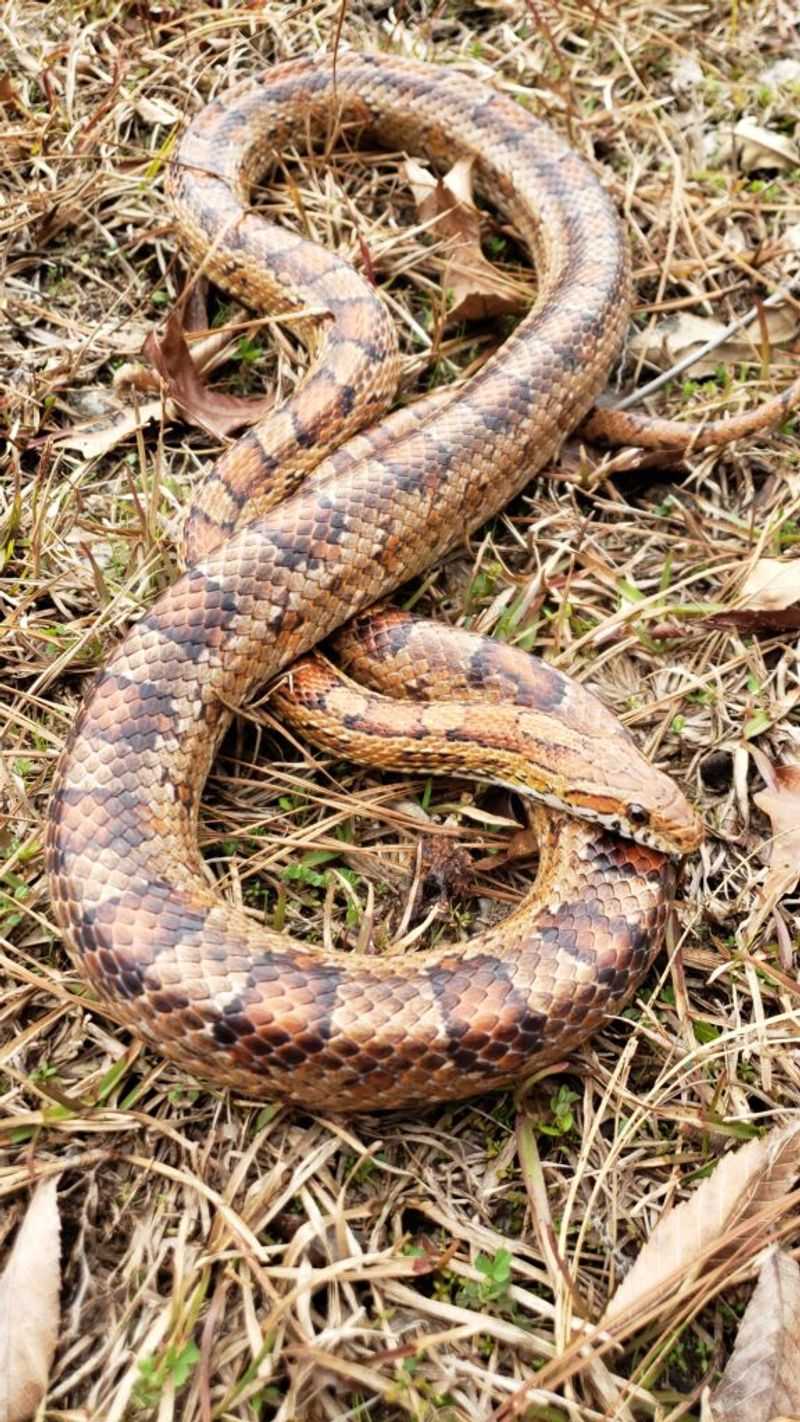
Corn Snakes are one of the most vibrantly colored reptiles in North Carolina’s swamps. Their orange and red scales, adorned with black-bordered blotches, create an eye-catching pattern.
These non-venomous snakes are excellent climbers and are often found in wooded areas, hunting for rodents and birds. Their docile nature makes them popular in the pet trade.
Did you know? Corn Snakes are named for their regular presence in cornfields where they hunt for prey, not for their diet. They’re invaluable for controlling rodent populations.
Ribbon Snake
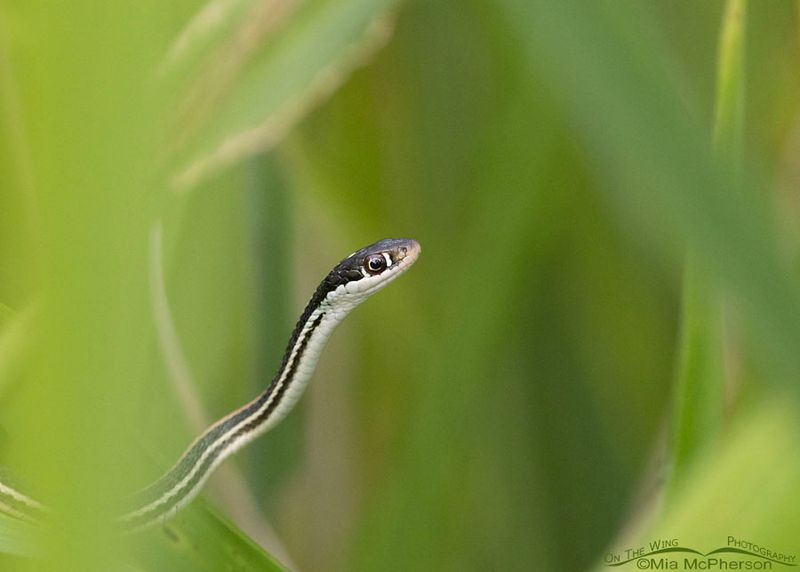
The Ribbon Snake is a sleek, elegant reptile that graces the swamps of North Carolina with its presence. Its slender body is marked by bold stripes, making it easily recognizable.
These non-venomous snakes are skilled hunters, preying on small amphibians and fish. They are often seen near water, their reflective scales shimmering in the sun.
Interesting note: Ribbon Snakes are closely related to garter snakes and share similar habitats and behaviors, although they are more aquatic in nature.
Eastern Garter Snake
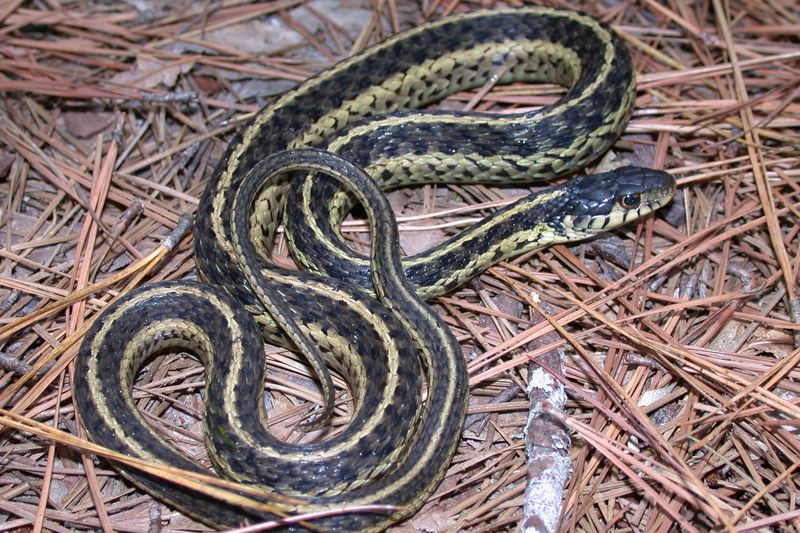
The Eastern Garter Snake is a common yet captivating presence in the swamps of North Carolina. Its vibrant stripes and agile movements make it a joy to observe.
Garter snakes are non-venomous and feed on a diverse diet, including amphibians, worms, and small fish. Their adaptability allows them to thrive in various environments, even those altered by human activity.
Fun fact: Eastern Garter Snakes have a mild venom that is harmless to humans but helps subdue their prey, making them efficient hunters.
Green Treefrog
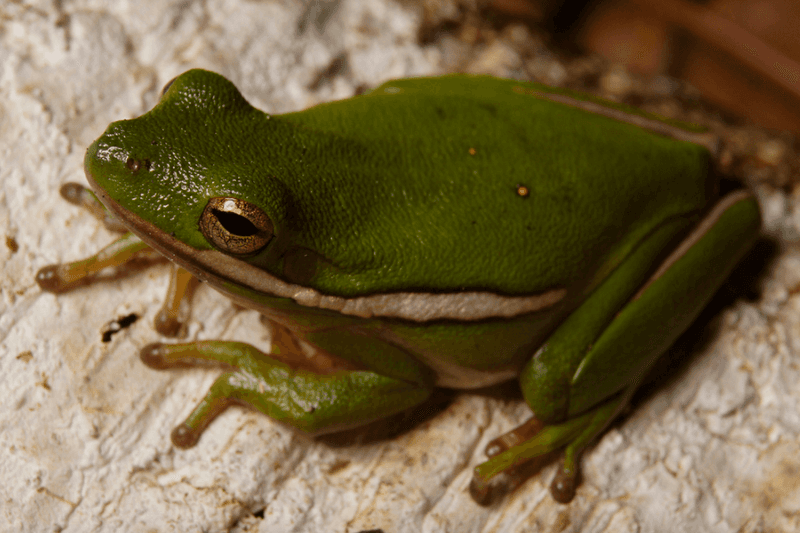
Though not a reptile, the Green Treefrog is an honorary mention due to its prominence in swampy ecosystems. With its vivid green coloration, it blends beautifully into its leafy surroundings.
These frogs are often heard more than seen, their distinctive calls echoing through the swamps on humid nights. They primarily feed on insects, contributing to pest control.
Did you know? Green Treefrogs can change shades from bright green to a duller, more camouflaged color to suit their surroundings and temperatures.
Coastal Plain Cooter
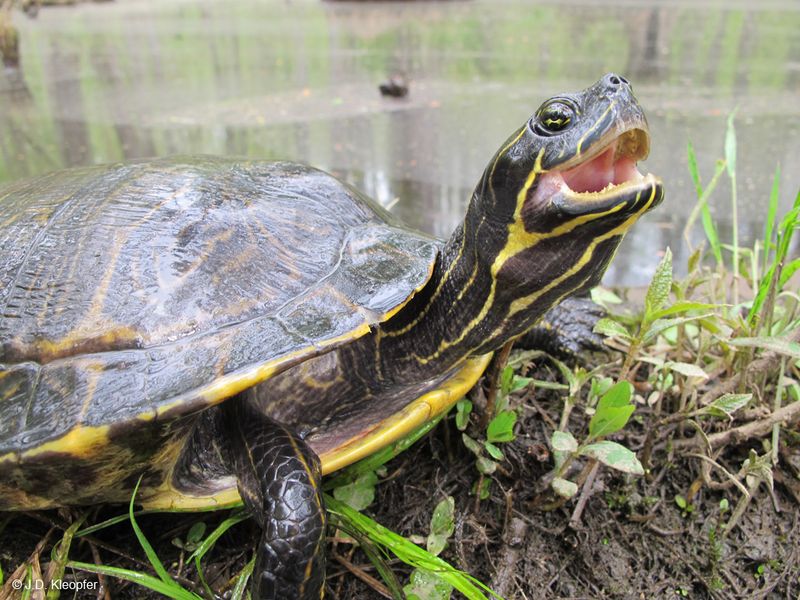
The Coastal Plain Cooter is a large, aquatic turtle commonly found in North Carolina’s swamps. Its broad, dark shell and strong limbs make it an excellent swimmer.
These turtles are primarily herbivorous, grazing on aquatic plants. They play a significant role in maintaining healthy aquatic vegetation levels.
Fun fact: Coastal Plain Cooters are known for their social behavior, often seen basking in groups. Their communal sunning is not just social but also essential for their health and shell maintenance.
Southern Painted Turtle
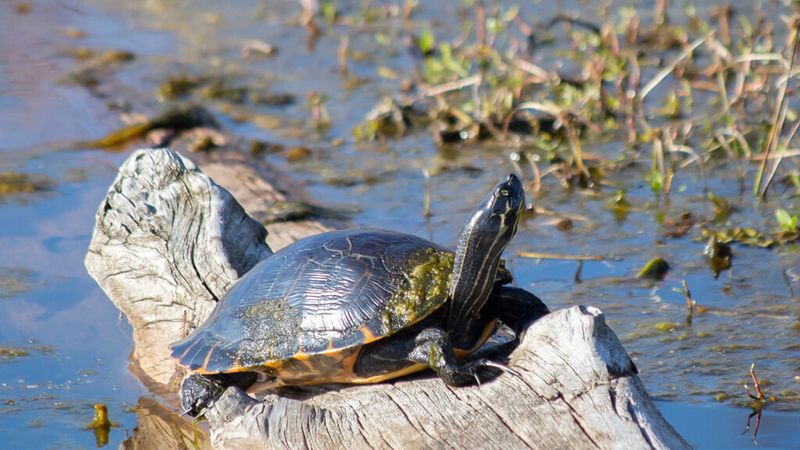
Southern Painted Turtles are small yet eye-catching, thanks to the bright stripe running down their dark shells. These turtles are often seen basking, absorbing sunlight to regulate their body temperature.
They are omnivorous, feeding on aquatic plants, insects, and small fish. Their adaptability and striking appearance make them a favorite among wildlife enthusiasts.
Did you know? The stripe on the Southern Painted Turtle’s shell helps distinguish it from other turtle species, providing a unique visual cue for identification.

